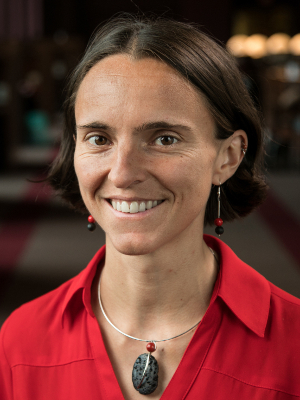NIMBioS Seminar Series
In conjunction with the interdisciplinary activities of the National Institute for Mathematical and Biological Synthesis (NIMBioS), a seminar series on topics in mathematical biology will be hosted at NIMBioS every other Tuesday at 3:30 p.m. (unless otherwise noted) in the Hallam Auditorium, Room 206, Claxton Building, 1122 Volunteer Blvd. Seminar speakers will focus on their research initiatives at the interface of mathematics and many areas of the life sciences. Light refreshments will be served in Room 205 beginning 30 minutes before each talk. Faculty and students from across the UT community are welcome to join us.
NIMBioS/Math Biology Seminar
Speaker: Dr. Lauren Childs, Mathematics, Virginia Tech
Time/Date: Tuesday, January 28, 2020, 3:30 p.m.*
Location: Room 206, Claxton Building, 1122 Volunteer Blvd.
Topic: Modeling malaria development in mosquitoes: How fast can mosquitoes pass on infection?
Abstract: The malaria parasite Plasmodium falciparum requires a vertebrate host, such as a human, and a vector host, the Anopheles mosquito, to complete a full life cycle. The portion of the life cycle in the mosquito harbors both the only time of sexual reproduction, expanding genetic complexity, and the most severe bottlenecks experienced, restricting genetic diversity, across the entire parasite life cycle. In previous work, we developed a two-stage stochastic model of parasite diversity within a mosquito, and demonstrated the importance of heterogeneity amongst parasite dynamics across a population of mosquitoes. Here, we focus on the parasite dynamics component to evaluate the first appearance of sporozoites, which is key for determining the time at which mosquitoes first become infectious. We use Bayesian inference techniques with simple models of within-mosquito parasite dynamics coupled with experimental data to estimate a posterior distribution of parameters. We determine that growth rate and the bursting function are key to the timing of first infectiousness, a key epidemiological parameter.
Dr. Lauren M. Childs is an Assistant Professor in the Department of Mathematics at Virginia Tech. She develops and analyzes mathematical and computational models to examine biologically-motivated questions. A main focus of her work is understanding the pathogenesis and spread of infectious diseases, particularly those transmitted by mosquitoes, such as malaria and dengue. She considers the interactions within a host organism, such as between an invading pathogen and the immune response, and how these within-host interactions impact transmission of disease throughout a population.
*Join us for refreshments at 3 p.m.
Seminar Flyer (pdf)
For more information about this and other NIMBioS Seminars, visit /seminars.
NIMBioS
1122 Volunteer Blvd., Suite 106
University of Tennessee
Knoxville,
TN 37996-3410
PH: (865) 974-9334
FAX: (865) 974-9461
Contact NIMBioS



